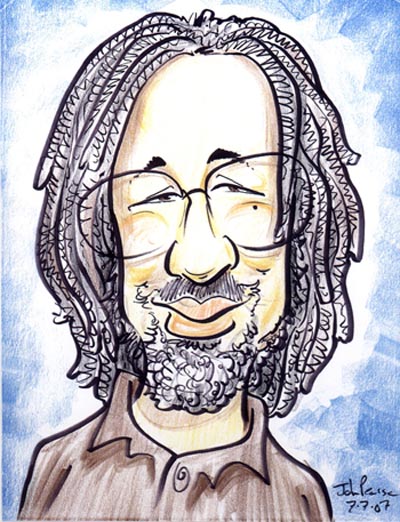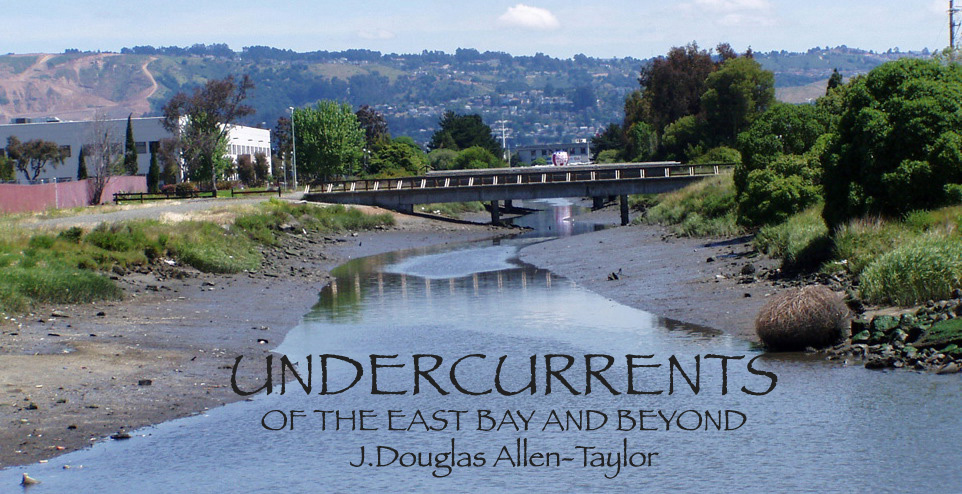|
|
THE HUE AND CRY OVER MEASURE Y AND MORE POLICE IN OAKLAND
November 9, 2007
Somebody’s going to have to help me out here, because I’m having a little difficulty understanding the current hue and cry in Oakland demanding more police. It’s not that I can’t see why some people might want more police. It’s just that I don’t understand who the people doing the most hueing and crying think is keeping the city from getting more police, and, therefore, I’m not sure exactly who the demand is being made to.
As often happens a history lesson, first, is in order.
Oakland has had three elections in recent years on the increase-the-police issue.
In November of 2002, then-Mayor Jerry Brown sponsored an advisory bond measure (FF) to, among other things, hire 100 more police officers, as well as three companion measures (GG, HH, and II) to pay for it. Oakland voters approved the 100 police increase 52.9 percent to 47.1 percent, but defeated the three tax measures by 12, 13, and 33 percentage points. But because of the confusing way the measures were written and the campaign for them was conducted, it is impossible to say now if Oakland voters fully understood they were defeating the hiring of the police by defeating the companion tax measures, and that they might have approved the entire package if it had been properly explained to them.
In any event, a year and a half later, in March of 2004, a coalition led by Councilmember Nancy Nadel put a new measure on the Oakland ballot (Measure R) that would have instituted a parcel tax for violence prevention measures, with 40 percent of the money going to social programs, 40 percent to increases in special areas of police enforcement, and 20 percent for jobs and jobs training. That measure, opposed by a coalition that included Council President Ignacio De La Fuente, came a little more than a percentage point of the 2/3rds vote needed to pass the parcel tax.
That November, Mr. De La Fuente headed a coalition that passed, on a 69.6 percent to 30.4 percent vote, Measure Y, the parking lot and parcel tax that authorized the hiring of 63 more police officers as well as provided funding for violence prevention programs.
In 2004, Mr. De La Fuente was a vocal supporter of increasing the number of Oakland police officers. He has since had something of a falling out with the Police Department, but that’s another story, and may not have changed his mind on the issue of the authorized number of police. That aside, one can reasonably assume that the 63 police officer increase figure in Measure Y—as well as the parcel tax increase necessary to fund it—was not simply pulled out of thin air or a hat, but was the result of careful study and polling that this was the maximum amount that could safely be put on the ballot to ensure a 2/3rds vote passage. Keep that thought in mind as we move forward in this discussion, because while up until this point the trail is pretty clear, after that it begins to murk up a bit.
The police officer increase in Measure Y put the authorized Oakland Police Department authorized strength at 803 officers. As of last month the department was at 730, about 70 officers short of full capacity, and, in fact, has never reached that full authorized capacity since the passage of Measure Y, despite having the collected parcel tax money to do so. This fact has sparked some of the most furious rhetoric around Oakland, with some people charging that there is a conspiracy to stop the police hiring and spend the tax money set aside for that purpose for something else.
Fond as I am of conspiracy theories and theorists, this seems to be a conspiracy theory desperately in search of conspirators to blame it on, or a suggested method of operation by which they are pulling it off.
The language of Measure Y provides, first, that “all funds collected by the City from the taxes imposed by this ordinance shall be deposited into a special fund in the City treasury and appropriated and expended only for the purposes authorized by this Ordinance,” and, second, that “an independent audit shall be performed to assure accountability and the proper disbursement of the proceeds of this tax in accordance with the objective stated herein .”
To date, to my knowledge, nobody has presented evidence that the Measure Y tax money has been misappropriated or not properly accounted for. Instead, the charge—sort of vaguely hinted at in public, more explicitly stated in private—is that the Measure Y money is being hoarded, squirreled away for use for some other city purpose. With many of the Councilmembers and the mayor under enormous political pressure from constituents to increase police services in the city, however, it is difficult to fathom why Mr. Dellums or any of the individual Councilmembers would see any political benefit in taking such a position, or, if they did take such a position, why they would risk transferring the funds surreptitiously if they chose to do it in secret or how they would overcome the enormous legal hurdles of trying to transfer the Measure Y money in the open.
Every so often, jokingly, some of my more progressive friends suggest that the Oakland Police Officers Association secretly wants to keep down the number of Oakland police officers in order to keep overtime at a premium, but this seems to be more of a jab at an old political enemy, the OPOA, and, again, no evidence is ever offered as to how the police union might be accomplishing this feat.
On the other hand, we have our own memories of the enormous recruiting drive for new police officers begun under the Jerry Brown Administration, and the assertion of his successor, Mr. Dellums, that the problem in reaching the 803 officer quota comes not for lack of trying, but for difficulties inherent in the process. At last month’s North Oakland Town Hall meeting, Mr. Dellums said that of every 1,000 individuals who answer Oakland’s massive police recruiting effort, half drop out almost immediately, and only 100 actually enter the academy. Of those 100, Mr. Dellums said, only 50 actually pass and enter the ranks as Oakland police officers. Meanwhile, the mayor added that 119 new recruits were hired by the police department last year, but that was almost offset by 60 retirements of existing officers, 40 transfers to other police agencies, and 10 terminations, leaving a net gain of nine new police officers for the year. “We need to be creative to figure out how to overcome this,” Mr. Dellums concluded.
There were many representatives of the hire-more-police faction present at the North Oakland meeting to hear Mr. Dellums’ assertions. To date, to my knowledge, none of them have publicly challenged the mayor’s figures or his explanation of the difficulties.
One of the organization loudest in criticism of the failure of the city to reach the 803 police officer figure, and campaigning the hardest to increase the number of police in the city above and beyond that number, is Oakland Residents For Peaceful Neighborhoods (ORPN). ORPN has set that preferred officer strength at 1,100, and ORPN’s co-founder, Charles Pine—an announced candidate for the At Large Oakland City Council seat in next year’s election—prominently announces “We need at least 1,100 officers” in the only bolded sentence on the front page of his campaign website.
ORPN’s website lists numerous criticisms of Oakland’s response to the violent crime epidemic, asserting this week, for example, that “What are Oakland officials doing about the public safety crisis? They are preparing a program for outreach to ‘at-risk’ youth on the streets, especially gang members. Details are not firm yet, but it appears the program boils down to asking the thugs that they not kill each other when they have disputes among themselves.” However, both the ORPN’s and Mr. Pine’s campaign websites are vague on details as to how they might fill the full complement of currently-authorized 803 police slots if they were in charge or where the money would come from the hire the additional 200 police officers they desire to bring that authorization up to 1,100. The devil is always in the details, but perhaps I missed that link, and someone in the group will correct me, and send me the information.
There is, however, a hint of where the ORPN folks are headed in the first item on their platform on their website, where they say “We are for restoring public safety in Oakland. That means at least 1,100 police officers, and therefore a solid plan and commitment to rebuilding what is currently half a police department. That means bringing closure to the crippling ‘negotiated settlement agreement’ that continues to enrich a couple of attorneys year after year.”
The negotiated settlement referred to, one presumes, is the Allen v. City of Oakland consolidated “Riders” cases settlement, in which the city agreed, under court supervision, to “prevent conduct [by the Oakland Police Department] that deprives persons of the rights, privileges and immunities secured or protected by the Constitution or laws of the United States.” Some of the police conduct in the Allen-Rider allegations was the planting of evidence on innocent victims, or beating confessions out of suspects. Perhaps the folks at ORPN are not in favor of planting evidence on innocents or beating suspects but, if so, they might want to say so, and give some details of which of the Allen-Riders police reforms they actually think should be thrown out.
Meanwhile, for those who believe it is the current will of Oakland that we increase the size of the police force above the current authorized 803, a simple solution is in order. Let them collect the signatures to put another measure on the ballot that both mandates the desired 1,100 officer strength, as well as provides the funding source, either in the form of new taxation, or in a mandated budgetary set-aside as we currently do for youth-oriented programs. Oaklanders took three electoral bites out of this public safety apple since 2002, settling on the compromise that was Measure Y. If someone believes that the mood in Oakland has significantly changed on that issue since November of 2004, enough to change the mandates of Measure Y, they should prove it by more than a show of hands at a community meeting, or the number of supportive emails they have received.
|

